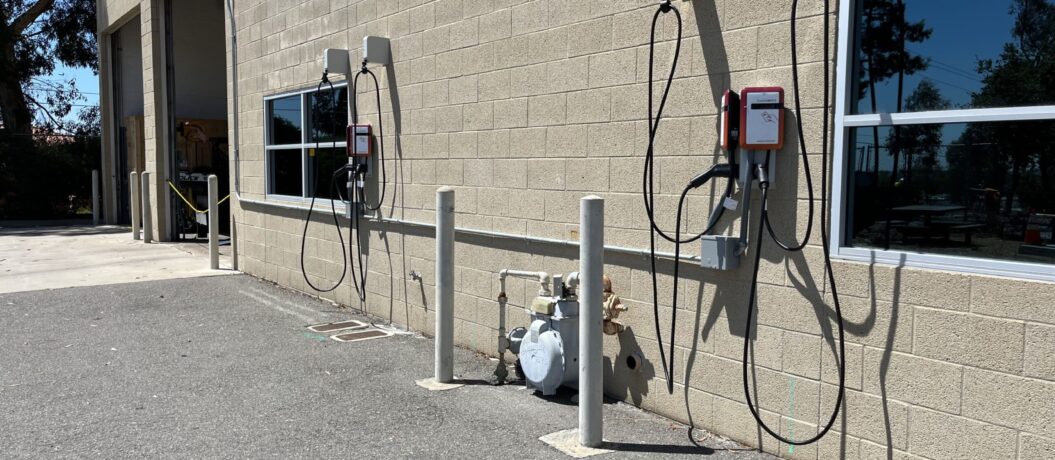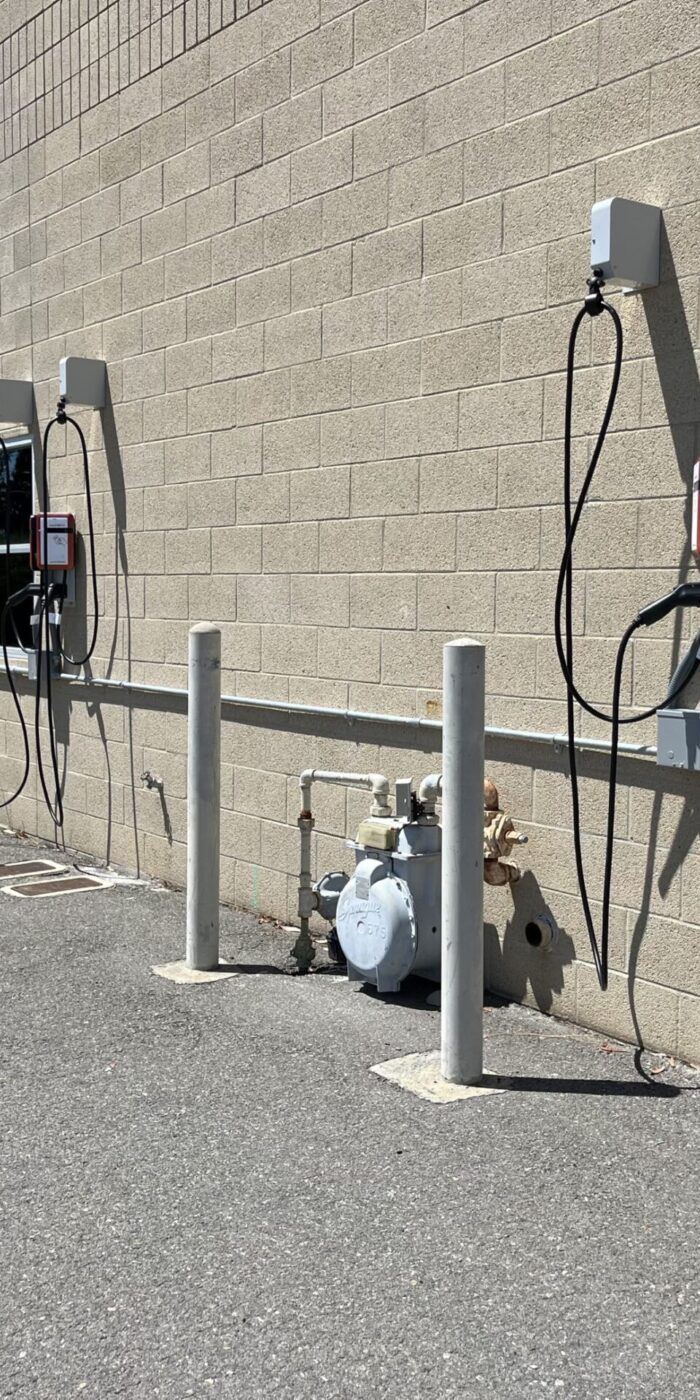Charge management software (CMS) is a newer technology designed to help fleets optimize the operations of their electric vehicles. The charging software allows fleet managers to schedule and coordinate charging sessions, ensuring vehicles are ready for use when needed without grid overloading. CMS also considers factors like energy costs, grid demand, and renewable energy availability when charging to reduce a fleet’s expenses and environmental impact.
Key Focus
The adoption of electric vehicles has been steadily increasing in recent years across all industries, driving a growing demand for solutions to manage their energy usage. To meet this increasing demand, AssetWorks developed a CMS that leverages advanced analytics and automation and seamlessly integrates with our fleet management systems to monitor and optimize charging.
Key Features of Charge Management Software
CMS helps fleets manage their EV charging infrastructure. Charge software offers a range of features to streamline operations, optimize usage, and ensure a seamless charging experience for users. Features you can find in AssetWorks CMS include:
Charge Station Monitoring
Reservation and Scheduling
Load Balancing
Reporting and Analytics
Scalability and Multi-Location Support
Charge Scheduling
Whether organizations are running a public charging network, managing an EV fleet, or operating charging stations for employees, charge management software can streamline operations and enhance the EV charging experience for users.
Benefits of Charge Management Software
When a fleet carefully selects the right CMS for their specific needs, they unlock benefits beyond managing EV charging infrastructure. These advantages can revolutionize the efficiency and effectiveness of fleet management in the long term. Here’s a closer look at how the right CMS can bring about transformative outcomes:

1. Optimized Charging Schedules
CMS allows fleet managers to ensure they do not schedule their EVs to charge during peak hours, and instead charge when rates are lower to reduce overall energy costs. The charging schedules also improve operational efficiency by ensuring an EV is charged and ready for driving when needed.

2. Cost Savings
CMS monitors energy costs and grid demand, minimizing a fleet’s charging expenses. It also manages load distribution, reducing the need for costly infrastructure upgrades.

3. Improved Operational Efficiency
CMS automates and coordinates charging sessions, so no manual work is required from fleets. The software also automatically collects charging-related data, so fleets have real-time insights into charging status and vehicle readiness.

4. Load Management
Fleets can rest easy knowing CMS balances the charging load across their fleet to prevent data loading. It also ensures fleets maintain a stable power supply to avoid possible disruptions to operations.

5. Enhanced EV Fleet Utilization
Having CMS schedule EV vehicle charging can maximize their uptime and ensure they are charged and ready for use- decreasing downtime and increasing fleet productivity.

6. Opportunity for Data-Backed Decisions
With CMS, fleets are provided with a detailed report and analytics on energy usage, charging patterns, and costs- helping them have the necessary data to make informed decisions.

7. Increased Sustainability
CMS allows fleets to optimize their charging schedule, reduce energy consumption, and optimize the usage of renewable energy sources- allowing fleets to conserve their energy usage to reduce their carbon footprint.

8. Improved System Reliability
CMS tracks the status of charging stations, allowing for quick identification and resolution of issues. This proactive maintenance approach minimizes downtime and ensures vehicles are always ready for use.
By adding CMS into their operations, fleets can unlock these benefits that enhance their performance and align with broader environmental and sustainability goals, adding even more benefits to their operations.
Environmental Benefits
Implementing a CMS opens the door to becoming a green fleet by enabling the efficient use of EVs. This can not only enhance operational efficiency but also unlock numerous other benefits that collectively contribute to a cleaner, more sustainable transportation ecosystem:
Reduced Greenhouse Gas Emissions
EVs produce zero tailpipe emissions- significantly reducing greenhouse gas emissions compared to ICE vehicles.
Lower Air Pollution
Electric fleets help reduce air pollution in urban areas, leading to better public health by decreasing the release of harmful pollutants such as nitrogen oxides and particulate matter.
Energy Efficiency
EVs are more energy-efficient than ICE vehicles. They convert a higher percentage of the energy from the power grid into vehicle movement, leading to lower energy consumption and reduced strain on energy resources.
Promotion of Renewable Energy
Electric fleets can be charged with electricity from renewable sources such as wind, solar, and hydroelectric power, decreasing their environmental impact and supporting the transition to cleaner energy sources.
Reduced Oil Dependence
Electric fleets reduce dependence on fossil fuels, helping to enhance energy security and reduce the environmental impact of oil extraction, transportation, and refining.
Long-Term Sustainability
EVs have longer lifespans and lower maintenance requirements than ICE vehicles, meaning fewer resources are used over the vehicle’s lifetime, reducing the environmental footprint associated with manufacturing and disposal.
CMS is integral to green fleet management as it optimizes EV charging infrastructure. With charge scheduling software, fleets can charge during off-peak hours and integrate renewable energy sources. Charge management software also supports energy efficiency and grid stability, aligning with sustainability goals and promoting clean transportation solutions.
Industry-Specific Benefits
CMS is designed to address the unique challenges and requirements of fleets across various industries. By offering customized functionalities and specialized features, CMS not only enhances operational efficiency but also effectively reduces operational costs, making it a versatile and invaluable asset across different sectors:
EV charge management software offers significant advantages for various fleet types, from optimizing operational readiness to supporting sustainability initiatives. By leveraging this technology, fleets can achieve greater efficiency, cost savings, and environmental benefits.
AssetWorks Charge Management Software (CMS)
AssetWorks CMS is a powerful solution created for fleets, seamlessly integrating with AssetWorks FleetFocus and EAM solutions. This integration allows fleet and facility managers to effortlessly oversee their entire operations within one unified system. This robust integration enables seamless tracking of electric vehicle charging alongside petroleum and other alternative fuel usage. Charging session events are automatically integrated, eliminating the need for manual data entry and reducing the risk of errors. These events and associated costs are seamlessly applied to the asset for internal billing, total cost analysis, and other historical reporting purposes. With AssetWorks CMS, fleets can streamline their operations, optimize resource allocation, and drive towards a more sustainable and cost-effective future.












